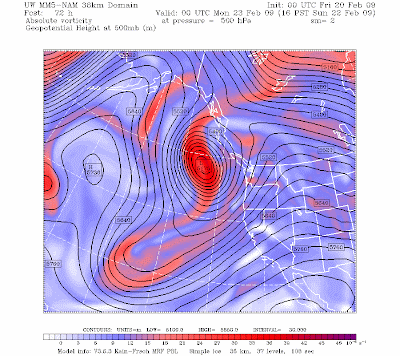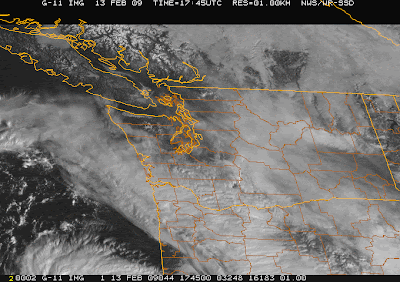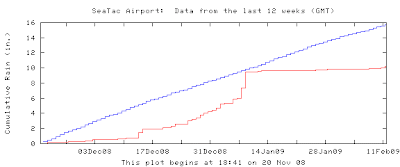
You see the increasing clouds aloft...these are associated with an approaching warm front aloft...one associated with a vigorous offshore system (see sat pic). But that system..and its strong winds will not make landfall in the NW and strong winds will not reach our interior.
With low pressure offshore and high pressure inland, strong offshore (easterly) flow has developed west of the Cascades. So I would expect breezy conditions as one approaches the passes today--on I90 east of North Bend. The Seattle profiler shows the easterlies aloft...and such flow often produces warm temperature over the
 lowlands...so I expect temps in Seattle to surge into the 50s today.
lowlands...so I expect temps in Seattle to surge into the 50s today.The precipitation should hold off until this evening...so today should be a fine one, expect for some high and middle clouds. Then tomorrow we will see considerable clouds and some showers...and mild temps on the south side of the warm front (50s).
The weather pattern this week is a familar one..with a major low/trough over the Pacific (see sample upper level chart on Sunday). Low centers will spin up the coast offshore and most of the precipitation will head into California..where they need it. A boring collection of clouds and showers for us through Wednesday, after which the models indicate the chance of a cool down again. But I will wait before talking about that...
PS: For those interesting, I will be on KCTS on Sunday at 7 PM, answering weather questions (see link at right). Also I wanted to note the NW weather workshop on March 20-21st for those interested...it is open to all, but you should register in advance--but this does include technical talks (see link to right).
















































